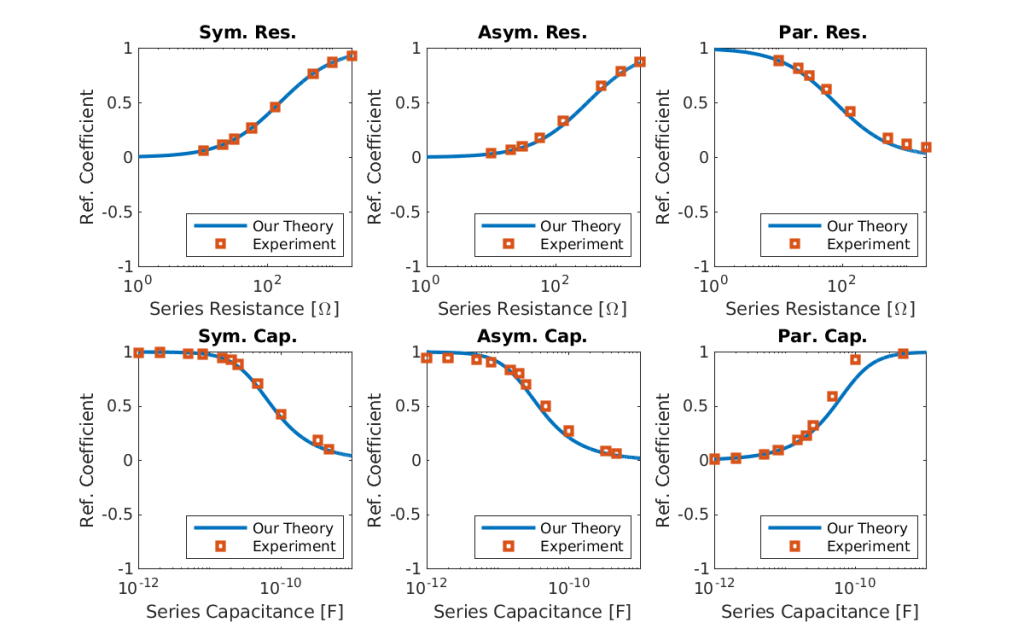Spread Spectrum Reflectometry on Complex Transmission Lines Repository

Summary
Transmission lines aren’t always simple—especially in complex systems like aircraft wiring, industrial cabling, or sensor networks. As these systems age, hidden faults, impedance mismatches, and parasitic elements can quietly degrade performance. Detecting those issues without disrupting the system? That’s the challenge.
This CodeOcean capsule implements a Spread Spectrum Time Domain Reflectometry (SSTDR) algorithm for detecting and localizing lumped elements—like capacitors and resistors—on asymmetric transmission lines, developed by Ayobami Edun, based on the work of Sabeti, Leckey, De Marchi, and Harley.
🔍 What is SSTDR?
SSTDR is a non-intrusive method for fault detection and localization. Unlike traditional reflectometry (like TDR), which sends narrow pulses, SSTDR uses pseudo-random binary sequences (PRBS) to inject spread-spectrum signals into the line. These sequences have excellent autocorrelation properties that help isolate reflections caused by impedance changes.
The reflected signal r(t)r(t)r(t) is correlated with the known input s(t)s(t)s(t), giving a cross-correlation function: C(τ)=∫s(t)⋅r(t+τ) dtC(\tau) = \int s(t) \cdot r(t + \tau) \, dtC(τ)=∫s(t)⋅r(t+τ)dt
where τ\tauτ corresponds to the round-trip time delay from impedance discontinuities. Peaks in C(τ)C(\tau)C(τ) reveal the presence and location of faults or elements.
⚙️ What’s New in This Work?
This study extends SSTDR to:
- Asymmetric transmission lines (i.e., different impedance or geometry along each wire),
- Lumped components embedded in the line (e.g., sensors, fault simulators),
- Complex reflection behavior due to non-uniformity and asymmetry.
Rather than modeling the line as homogeneous, the algorithm accounts for these irregularities to accurately estimate both location and type of impedance changes.
📦 What’s in the CodeOcean Capsule?
The repository contains:
- 🧪 MATLAB code to simulate SSTDR on asymmetric transmission lines,
- ⚡ A function to model lumped impedance elements (R, L, C) at arbitrary locations,
- 📊 Cross-correlation tools for reflection signature analysis,
- 🖼️ Visualizations to help interpret SSTDR signals and identify component types and locations.
📈 Key Results from the Paper
- The method distinguishes between capacitive and resistive elements based on waveform shape and location in the correlation domain.
- Experimental and simulated results showed localization errors of <3% of total line length.
- The approach is robust to background noise and low SNR, thanks to the spread-spectrum input.
🛠️ Applications
- ✈️ Aircraft wiring diagnostics (detecting sensor dropouts, connector issues),
- 🏗️ Industrial power and sensor networks,
- 🔌 In-situ electronics fault detection without powering down the system,
- 🔍 Embedded systems monitoring with known parasitic elements.
📚 Reference
Sabeti, S., Leckey, C. A. C., De Marchi, L., & Harley, J. B. (2020).
Spread Spectrum Time Domain Reflectometry With Lumped Elements on Asymmetric Transmission Lines.
IEEE Sensors Journal, 21(1), 921–929.
🔗 https://ieeexplore.ieee.org/document/8963644
🚀 In Summary
This capsule puts advanced reflectometry tools into the hands of engineers, researchers, and students. By leveraging spread-spectrum sensing and a deep understanding of asymmetry in transmission lines, the algorithm helps uncover hidden faults and verify embedded components—without interrupting critical systems.
Smart diagnostics. Subtle signals. Strong insight.
Anisotropy electromagnetics modelling Nondestructive Testing simulation transmission line

